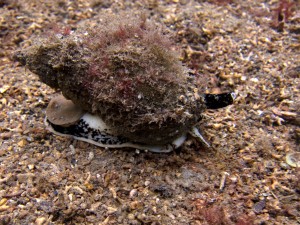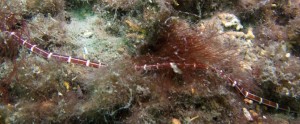The philosopher Ludwig Wittgenstein (1889-1951), was born in Vienna, wrote in German and spent  much of his life at Cambridge University. Sounds like a priveleged existence. But Wittgenstein was no ordinary academic. He served in the frontline in the first World War and, having tidied up, or so he believed, all the remaining problems of philosophy in his first work Tractatus Logico-Philosophicus in 1921 he turned away from philosophy and became variously a school teacher in Austria and a hospital porter in London. Having reflected on his early work and having decided that perhaps, after all, he hadn’t solved all the remaining philosophical problems, he returned to Cambridge in 1929 and stayed there till his death in 1951. Late in his life he travelled to Dublin to work on manuscripts. Not finding the quiet he sought, he spent some time in a friend’s cottage in Rosroe (53.620374,-9.860212), a tiny fishing village on the south side of Killary Harbour. The fact that he referred to this part of Ireland as being ‘the last pool of darkness’, a phrase used by Tim Robinson as the title of his most recent work on Connemara, suggests Wittgenstein found a measure of quiet and peace in which to formulate his thoughts.
much of his life at Cambridge University. Sounds like a priveleged existence. But Wittgenstein was no ordinary academic. He served in the frontline in the first World War and, having tidied up, or so he believed, all the remaining problems of philosophy in his first work Tractatus Logico-Philosophicus in 1921 he turned away from philosophy and became variously a school teacher in Austria and a hospital porter in London. Having reflected on his early work and having decided that perhaps, after all, he hadn’t solved all the remaining philosophical problems, he returned to Cambridge in 1929 and stayed there till his death in 1951. Late in his life he travelled to Dublin to work on manuscripts. Not finding the quiet he sought, he spent some time in a friend’s cottage in Rosroe (53.620374,-9.860212), a tiny fishing village on the south side of Killary Harbour. The fact that he referred to this part of Ireland as being ‘the last pool of darkness’, a phrase used by Tim Robinson as the title of his most recent work on Connemara, suggests Wittgenstein found a measure of quiet and peace in which to formulate his thoughts.
This ‘last pool of darkness’, is, to use a cliche, a majestic spot. Those who prefer their leisure above ground will walk Mweelrea mountain or take the ‘Trail of Tears’ from Delphi to Louisburgh on the north side of Killary. Those who prefer their pleasures below the water surface invariably make their way to Rosroe Pier on the south shore on the little peninsula that separates Little Killary from the larger Killary. Until recently the slip was awkward and difficult to negotiate, except for small ribs and inflatables, but recent years have seen significant work in response to the needs of the aquaculture industry which occupies many spots in the sheltered waters of Killary Harbour. The pier and slip are now perfectly adequate for launching large ribs and parking trailers and cars.

The shore diving here is straightforward. Enter the water from the pier and head north to pick your depth – anything up to 40m is possible in the middle of this glacially overdepeened valley. If you head east it is possible to pick up the remains of a trawler, the Rath Connla, which broke free of its morrings and sank in 2007, having sprung a timber (accoding to its previous owner) in about 16m. This requires a snorkel of about 200m. Given that this is a working pier watch out for boats coming and going from the various acqualture units scattered throughout the area.
depth – anything up to 40m is possible in the middle of this glacially overdepeened valley. If you head east it is possible to pick up the remains of a trawler, the Rath Connla, which broke free of its morrings and sank in 2007, having sprung a timber (accoding to its previous owner) in about 16m. This requires a snorkel of about 200m. Given that this is a working pier watch out for boats coming and going from the various acqualture units scattered throughout the area.
Whilst the detritus of a working area is very visible, the profusion of bottom and filter feeders makes the dive a treat; scallops, tubeworms and whelks all provide an opportunity for photography and marine life observation.
I am quite certain that Wittgenstein in his last few years did not experience the pleasure of using the then newly invented ‘self contained underwater breathing  apparatus’ but I am equally certain that he had something like diving in mind when he noted that “If we take eternity to mean not infinite temporal duration but timelessness, then eternal life belongs to those who live in the present.” Whatever about eternal life, I think diving qualifies as being in the present and thus timeless.
apparatus’ but I am equally certain that he had something like diving in mind when he noted that “If we take eternity to mean not infinite temporal duration but timelessness, then eternal life belongs to those who live in the present.” Whatever about eternal life, I think diving qualifies as being in the present and thus timeless.
[mappress mapid=”12″]